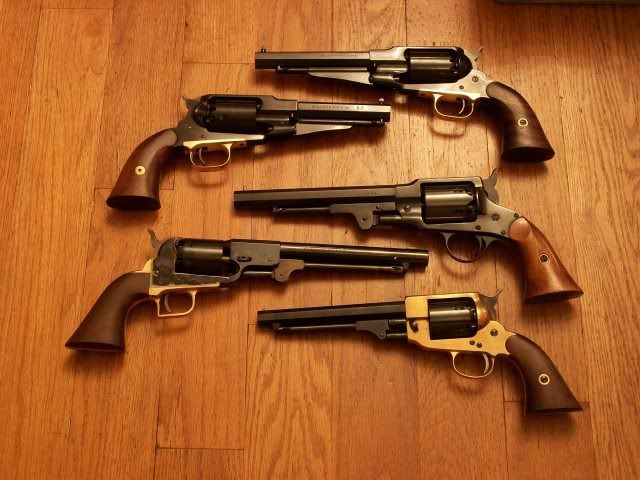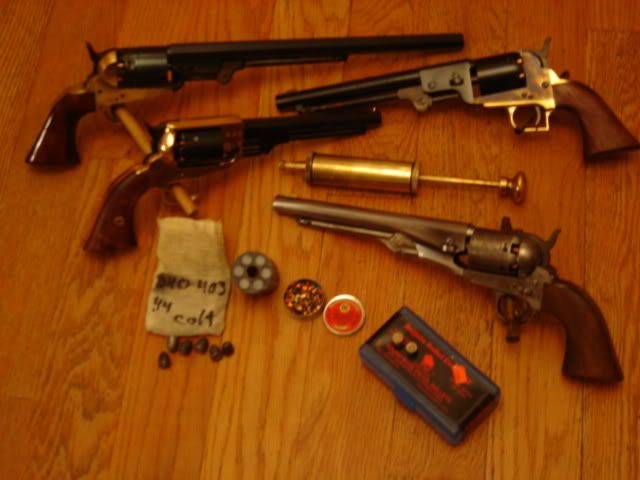I have been shooting cap and ball revolvers since about 1970, all of them reproductions and one reissue (Colt 2nd generation 1851 Navy).
I like both the Remington and the Colt. Both have their good points and bad.
The Colt grip -- 1851 Navy and 1860 Army -- fit better in my hand.
The Colts are much better balanced than the Remingtons. They point very well. In fact, the 1851 and 1861 Navies are considered some of the best-balanced handguns ever produced. With very little practice, you can get them to roll forward and backward on your finger, if that sort of thing appeals to you.
The Remington is not as well balanced but has better sights. It has a groove along the topstrap, and a well-defined front sight. The Colts have merely a notch in the hammer nose and a brass bead that becomes an ill-defined yellow blob in bright sunshine.
For target shooting, the Remington is better. For instinctive point-shooting, the Colt excels.
But both revolvers are capable of very fine accuracy because, like the originals, today's reproductions have rifled barrels.
My Uberti-made Remington will put 6 .454 inch balls into a 2" circle at 25 yards from a benchrest, if I take extra effort to load it carefully.
My Colt 1851 Navy will put six .380-inch balls into a 3" circle.
The Remington with its top-strap is stronger than the Colt, but the point is rather moot because both guns are designed only for black powder pressures.
One point: If you're thinking of buying a cap and ball revolver, buy one with a steel frame. The brass-framed ones wear out more quickly if fed a steady diet of loads considered to be standard in the steel-framed models. If you purchase a brass-framed cap and ball revolver, you'll need to shoot lighter loads in it, or damage will result over time.
This means not exceeding 30 grs. FFFG black powder or equivalent in the .44 and not more than 18 to 20 in the .36 caliber.
It's best to buy a steel-framed gun. Nearly all of the brass-framed guns I've seen over the years are lower quality than their steel-framed brethren. Occasionally, you may see a high-quality brass-framed gun but they're not common.
Owning a cap and ball revolver means a commitment to clean it immediately after firing, in most instances. There's no waiting a day or two, because rust will set in quickly. However, a stainless steel cap and ball revolver may allow you to delay a few days. Eventually, however, even stainless steel will rust.
The culprit is the fouling. Black powder fouling contains a salt very similar to common table salt. Pyrodex fouling contains perchlorates, which may make it more corrosive than black powder (opinions and sources vary).
Despite manufacturer claims, no propellant designed for black powder is non-corrosive. They all draw moisture, if they do not contain a corroding agent, and that moisture can quickly cause rust.
If you search my name -- Gatofeo -- along with "cap and ball revolver" you'll find many of my posts on the internet concerning these revolvers. You'll find a wealth of information in, "So You Want a Cap & Ball Revolver" and "Proper Use of a Cap & Ball Revolver."



